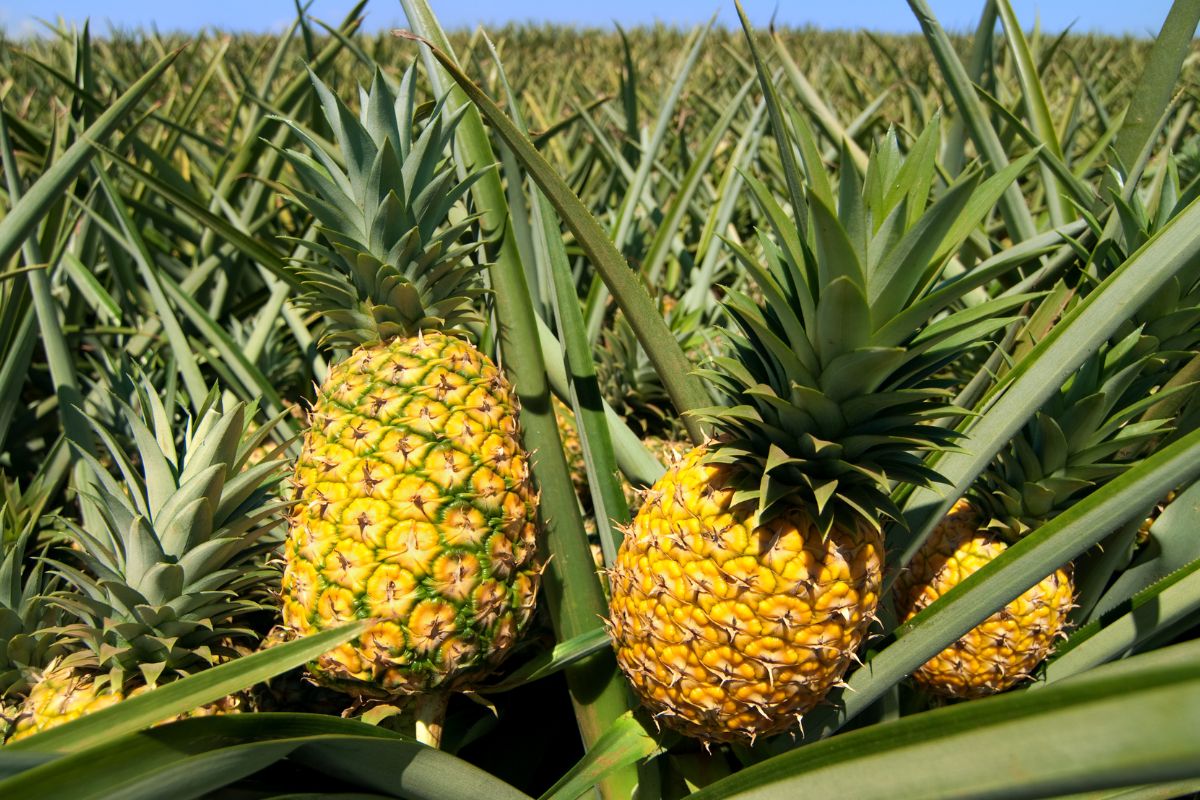The Pineapple Tree: Facts, Growth, and Uses

A pineapple is a tropical fruit revered for its sweet and tangy taste. So, the fact that may come as a shock to some is that pineapples do not grow on a traditional tree. Instead, the pineapple belongs to the Bromeliaceae family and is a herbaceous perennial plant. The plant grows close to the ground with spiky leaves extending from a central stem. The pineapple tree, as it is misleadingly called, is a common term used to refer to the plant that gives this amazing fruit.
Origins and History of the PineappleTree
Pineapples originated in South America, specifically in areas that are currently within the borders of Brazil and Paraguay. Before European explorers arrived, the native people of these regions grew pineapples. In 1493, Christopher Columbus brought pineapples to Europe. He found them in the Caribbean. In the early days of exploration, the fruit was rare and difficult to transport, so it quickly became a symbol of wealth and hospitality. Pineapples were grown in European greenhouses in the 16th and 17th centuries. However, production was low because of climate challenges.
How a Pineapple Tree Grows
Many people falsely believe that pineapples grow on trees. In reality, they are the fruit of a low-lying plant, typically around three to five feet tall. There’s not a lot of fruit per plant. Each plant produces only one fruit, as the fruit grows from a central stalk that shoots up from the rosette of leaves. Many flowers fuse together to form the complex structure of the pineapple, which is considered a type of multiple fruit. Growing a pineapple is a slow process, taking anywhere from 18 to 24 months to mature from the point of planting. After harvesting, a plant may bear smaller fruits, referred to as ratoons, but eventually will require replacement. Pineapples can be grown in many different ways.
- Crown Propagation: A pineapple’s leafy top, known as the crown, can be pulled off and planted to grow a new fruit plant.
- Sucker Propagation: Roots emerge between the leaves in small shoots, which can be separated and planted.
- Slip Propagation: Side shoots that emerge just beneath the fruit can also be used to propagate new plants.
Ideal Growing Conditions
Pineapples grow best in tropical and subtropical areas. These regions offer warm weather, plenty of sunlight, and well-drained soil. These plants do best in sandy or loamy soil that is slightly acidic. Also, keeping enough space between plants is important. It allows air to flow well, which helps prevent disease. One of the advantages of growing pineapples is that they can withstand drought. However, for better quality and juicier fruits, frequent watering is essential. Care should be taken because pineapples are prone to root rot due to excess watering.
Health Benefits of Pineapple
Pineapples have a sweet taste as well as many health benefits. They are especially known for having a high vitamin C content, which can improve immunity and the skin. They also contain bromelain, an enzyme that aids in digestion and helps reduce inflammation. A few main health benefits of pineapple are:
- Easier Digestion: The enzyme bromelain helps in the digestion of proteins.
- Enhanced Immune Response: Vitamin C helps the body to reduce infections and diseases.
- Pain Relief: Pineapples help in relieving pain from swelling caused by injuries and arthritis.
- Anti-Inflammatory Benefits: The antioxidants and dietary fiber found in pineapples help protect the heart.
- Increased Hydration: With their high water content, pineapples are ideal to banquet on during hot weather while keeping hydrated.
Culinary Uses of Pineapple
Unlike most fruits, which taste sweet, pineapples can be enjoyed in their raw state or added to sweet or salty dishes. Here are some methods through which one can utilize pineapples:
- Eating raw: Pineapples are a great fruit addition to salads.
- Shakes: Add pineapples to shakes for a refreshing twist, or blend them to make a refreshing juice.
- Sweets: In desserts like cake, tarts, and pastries, pineapples give a delightful taste.
- Snacks: Pineapple goes well with seafood, grilled meat, and stir-fry dishes as well.
- In preserved forms: Pineapples have great long-term storage options: canning, jam making, and drying.
Pineapple on pizza has gained popularity globally; it consists of a tomato base with either bacon or ham and, of course, chunks of pineapple.
Challenges in Pineapple Tree Farming
Its popularity aside, farming pineapples has a number of troublesome issues that can arise. Pests and diseases threaten the growth and quality of the fruit. Common threats include:
- Pineapple Mealybugs: This insect damages the plant by sucking on the sap.
- Root Rot: Excess moisture can cause the root to rot and destroy pineapple plants.
- Leaf Spot Diseases: While the leaves and stems are alive, certain fungal infections may develop yellow to brown spots on the leaves.
Farmers use different strategies to tackle these problems. They set aside land for crop rotation. They also practice biological pest control. Additionally, they focus on selective breeding for disease-resistant varieties.
Conclusion
The pineapple tree is not actually a tree but a peculiar plant that grows low and produces one of the most loved fruits in the world. The pineapple is a fan favorite with a rich history. It also has great culinary uses, nutritional value, and health benefits. No matter how you eat a pineapple—fresh, in a smoothie, or cooked—it brings a unique tropical flavor to your diet.






